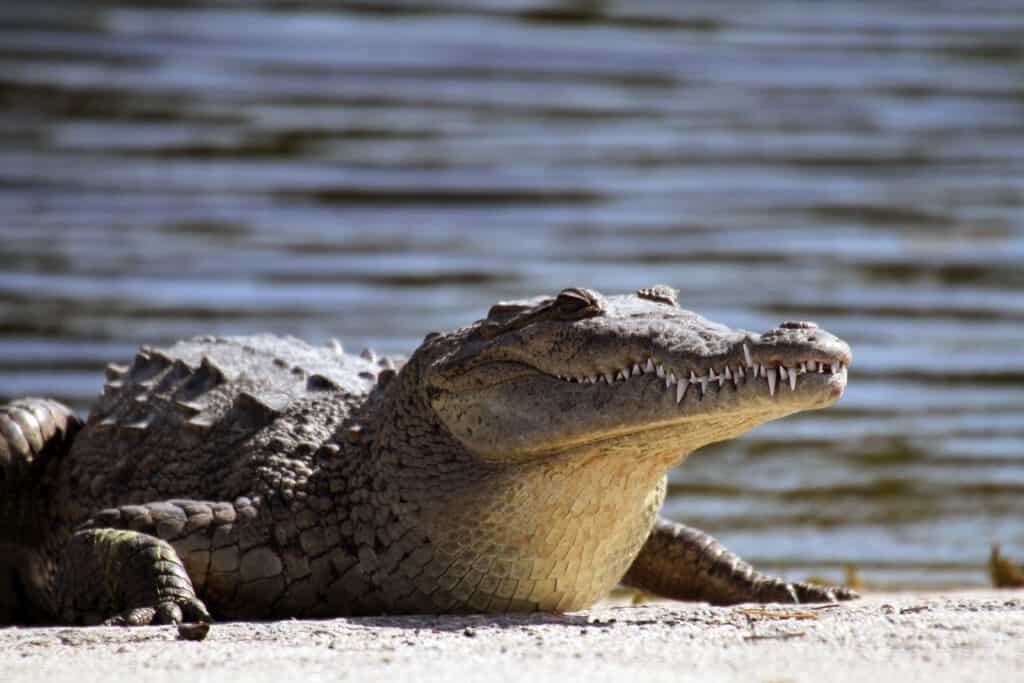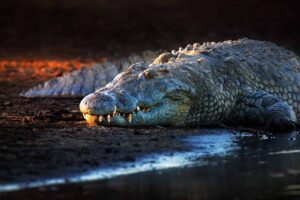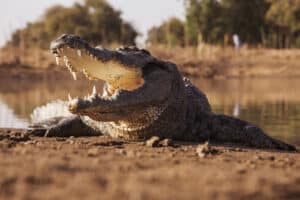The crocodile in this footage demonstrates three key attributes shown by many successful animal hunters. Camouflage, patience, and speed. When these three are combined in the right order, this pigeon does not stand a chance. The half-submerged croc is very easy to miss and is a very similar shade and texture to the surrounding rocks.
It is also exceptionally good at playing the long game and remaining still for long periods before striking with phenomenal speed. If you have ever tried to grab hold of a pigeon and seen just how quick their reactions are, you will be even more impressed by what has gone on here!
Check Out This Unfortunate Pigeon in the Video Below
Crocodiles in Florida
The notes accompanying this striking video tell us that this is an American crocodile. According to the Florida Fish and Wildlife Conservation Commission, American crocodiles are shy and reclusive reptiles that like to live in brackish or saltwater areas, so you are most likely to find them in ponds and coves as well as in creeks in mangrove swamps. Recorded sightings show that they are found in South Florida which is the northern end of their range. Although, there have been reports of sightings of crocodiles further north in Florida’s freshwater areas.
They are also found in Hispaniola, Cuba, Jamaica, and from southern Mexico to Venezuela, as well as along the Pacific coast from Mexico to Peru. Their diet is made up of small mammals, birds, frogs, turtles, and fish.

American Crocodiles can grow up to about 20 feet in length
©iStock.com/GriffinGillespie
Crocodiles or Alligators
American crocodiles are often confused with American alligators but there are some key differences between the two. In general, the crocs are larger. They can grow to up to 2,000 pounds and reach 20 feet compared to the 800 pounds and 11 feet recorded for alligators. Also, crocs are a lighter grey/green/brown color and have a V-shaped snout. Alligators are a bit darker (almost black) and have a U-shaped snout.
There are also differences in terms of behavior. Crocodiles are more social and will spend time with other crocs but the alligators prefer a more solitary lifestyle. Their habitat ranges are also different and the southern parts of Florida are the only places where they would be found together!
The photo featured at the top of this post is © iStock.com/CStorz
Thank you for reading! Have some feedback for us? Contact the AZ Animals editorial team.







